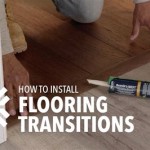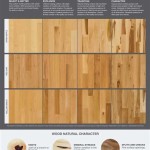Best Way to Remove Linoleum Flooring From Concrete
Removing linoleum flooring adhered to a concrete subfloor can be a challenging task, often requiring patience and the right tools. The adhesive used to bond the linoleum to the concrete can be exceptionally strong, making simple lifting and peeling ineffective. Successfully removing linoleum without damaging the underlying concrete involves a strategic approach, combining mechanical and chemical methods, while prioritizing safety to prevent injury and respiratory issues.
Before commencing the removal process, meticulous preparation is essential. This involves gathering the necessary tools and safety equipment, as well as understanding the potential challenges presented by the specific type of linoleum and adhesive used. Proper preparation not only streamlines the removal but also minimizes the risk of damage to the concrete and reduces overall project time.
Assessing the Linoleum and Adhesive
The first step in the preparation phase is to thoroughly assess the existing linoleum. Determine the age, thickness, and overall condition of the material. Older linoleum may be more brittle and prone to tearing, requiring a gentler approach. Thicker linoleum will naturally take more effort to remove than thinner varieties. Understanding the adhesive used is equally critical. In some cases, the type of adhesive can be identified visually, but often it requires testing a small area with different removal methods to gauge effectiveness.
Another key factor is the condition of the concrete subfloor. Look for signs of cracks, unevenness, or moisture. If the concrete is damaged, it may require repair after the linoleum removal. Moisture can also significantly complicate the removal process, weakening the adhesive in some areas while strengthening it in others. Address any moisture issues before proceeding.
Gathering Tools and Safety Equipment
A comprehensive toolkit is paramount for efficient linoleum removal. Essential tools include a floor scraper (both a handheld and a long-handled scraper are recommended), a utility knife, a hammer, a heat gun or hair dryer, an adhesive remover (solvent-based or citrus-based), a putty knife, a sturdy trash can, and protective sheeting to cover surrounding areas. For more stubborn areas, a power scraper or floor scraper with oscillating blades can significantly expedite the process. A wet/dry vacuum is invaluable for cleaning up debris and adhesive residue.
Safety should be prioritized throughout the entire removal process. Essential safety equipment includes safety glasses, work gloves, a dust mask or respirator (especially when dealing with older linoleum that may contain asbestos – professional testing is always recommended in older buildings), and knee pads. Proper ventilation is crucial, particularly when using solvent-based adhesive removers. Open windows and use fans to ensure adequate airflow. If working in an enclosed space, a respirator with appropriate cartridges is highly recommended.
Protect the surrounding areas from potential damage during the removal process. Use protective sheeting to cover walls, baseboards, and any adjacent flooring. Secure the sheeting with painter's tape to prevent it from shifting. This will minimize cleanup and prevent the spread of adhesive residue.
Methods for Removing Linoleum
Several methods can be employed to remove linoleum flooring from concrete. The most effective approach often involves a combination of these techniques, tailored to the specific circumstances of the installation. It's generally recommended to start with the least aggressive method and gradually increase the intensity as needed.
Using a Scraper
The most fundamental method is using a floor scraper. This involves carefully sliding the scraper blade under the linoleum and applying pressure to lift it away from the concrete. Start at a seam or edge, where the linoleum is likely to be less firmly bonded. A long-handled scraper is useful for covering large areas, while a handheld scraper provides more control for detail work and stubborn spots. The key is to maintain a low angle with the scraper to avoid gouging the concrete. Apply steady, even pressure, and work in small sections. If the linoleum tears easily, score it into smaller strips with a utility knife to make the removal process more manageable.
When encountering particularly resistant areas, try using a hammer to gently tap the scraper blade. This can help break the adhesive bond without requiring excessive force. Be careful not to hit the blade too hard, as this can damage the scraper or the concrete. Periodically sharpen the scraper blade to ensure optimal performance. A dull blade will require more force and increase the risk of damaging the concrete.
Applying Heat
Heat can be a valuable tool for softening the adhesive and making the linoleum easier to remove. A heat gun or hair dryer can be used to apply targeted heat to small sections of the linoleum. Hold the heat source a few inches away from the surface and move it slowly back and forth to avoid overheating and potentially damaging the linoleum or concrete. Once the adhesive has softened, use a scraper to lift the linoleum. The heat will make the adhesive more pliable, allowing it to release more readily from the concrete.
Exercise caution when using a heat gun, as it can generate very high temperatures. Wear heat-resistant gloves and avoid directing the heat at flammable materials. Work in a well-ventilated area to dissipate any fumes released by the heating process. Test a small, inconspicuous area first to ensure that the heat does not damage the linoleum or concrete.
Using Adhesive Remover
Adhesive removers are chemical solutions designed to dissolve or weaken the adhesive bond between the linoleum and the concrete. These removers are available in both solvent-based and citrus-based formulations. Solvent-based removers are typically more powerful but can also be more hazardous, requiring careful ventilation and personal protective equipment. Citrus-based removers are generally safer and have a less offensive odor, but they may not be as effective on tough adhesives.
Before applying adhesive remover to a large area, test it on a small, inconspicuous spot to ensure that it does not damage the linoleum or concrete. Follow the manufacturer's instructions carefully, paying close attention to application rates and dwell times. Typically, the remover is applied to the surface of the linoleum and allowed to sit for a specified period, giving it time to penetrate and soften the adhesive. After the dwell time, use a scraper to lift the linoleum. The softened adhesive should make the removal process significantly easier.
When using adhesive remover, maintain adequate ventilation and wear appropriate personal protective equipment, including gloves, safety glasses, and a respirator if necessary. Dispose of used adhesive remover and contaminated materials properly, following local regulations. Avoid pouring adhesive remover down drains, as this can cause environmental damage. Neutralize any remaining residue on the concrete with water and a mild detergent before proceeding with any repairs or new flooring installations.
Dealing with Stubborn Areas and Adhesive Residue
Even with the use of scrapers, heat, and adhesive removers, some areas of linoleum may remain stubbornly attached to the concrete. In these instances, more aggressive techniques may be necessary. A power scraper or floor scraper with oscillating blades can provide the additional force needed to break the adhesive bond. These tools are equipped with vibrating blades that quickly and efficiently remove the linoleum without requiring excessive manual effort.
Use power scrapers with caution, as they can easily damage the concrete if not handled properly. Maintain a consistent angle and pressure, and avoid applying too much force in one area. Wear safety glasses and hearing protection when using power tools. After the linoleum has been removed, adhesive residue will likely remain on the concrete surface. Removing this residue is essential for ensuring a smooth and even surface for any future flooring installations.
Several methods can be used to remove adhesive residue. Scraping is often effective for removing thick layers of dried adhesive. A putty knife or scraper can be used to carefully scrape away the residue. For more stubborn residue, adhesive removers can be reapplied to the affected areas. Allow the remover to dwell for the recommended time, and then scrape away the softened residue. A wet/dry vacuum can be used to clean up the resulting debris.
In some cases, grinding may be necessary to remove particularly persistent adhesive residue. A concrete grinder equipped with a diamond grinding wheel can effectively remove adhesive residue while also smoothing the concrete surface. Grinding should be performed by experienced individuals, as it can be aggressive and potentially damage the concrete if not done properly. Wear appropriate safety equipment, including a respirator, safety glasses, and hearing protection, when grinding concrete.
Repairing and Preparing the Concrete Subfloor
Once the linoleum and adhesive residue have been removed, thoroughly inspect the concrete subfloor for any damage. Cracks, holes, and unevenness should be repaired before installing new flooring. Small cracks can be filled with concrete patching compound. Follow the manufacturer's instructions for mixing and applying the compound. Allow the patch to dry completely before sanding it smooth.
Larger holes and damaged areas may require more extensive repairs. Consult with a concrete repair professional to determine the best course of action. Uneven surfaces can be leveled with a self-leveling concrete compound. This compound is poured onto the floor and allowed to spread and level itself, creating a smooth and even surface for new flooring.
Before installing new flooring, thoroughly clean the concrete subfloor to remove any dust, debris, or residual adhesive remover. A wet/dry vacuum can be used to clean the surface. If necessary, wash the floor with a mild detergent solution and rinse it thoroughly with clean water. Allow the floor to dry completely before proceeding with the new flooring installation. Priming the concrete subfloor can improve adhesion and prevent moisture transmission. Apply a concrete primer according to the manufacturer's instructions. The concrete subfloor is now ready for new flooring.

Best Way To Remove Linoleum Flooring Concrete

This Is The Easiest Way To Remove Linoleum Glue From Concrete Hometalk

The Easiest Way To Remove Linoleum From Concrete

How To Easily Remove Linoleum Houseful Of Handmade

4 Clever Ways To Remove Vinyl Floor Tiles From Concrete

How To Finish Removing Linoleum Adhesive For Tile On Concrete Floor Hometalk

How To Remove Linoleum Flooring 6 Easy Steps Home Pros

How To Diy Easy Way Remove Linoleum Flooring Off Concrete Slab

7 Creative Ways To Remove Linoleum From Concrete

What You Should Know About Removing Old Linoleum Or Vinyl Flooring Hq Longwood Fl








